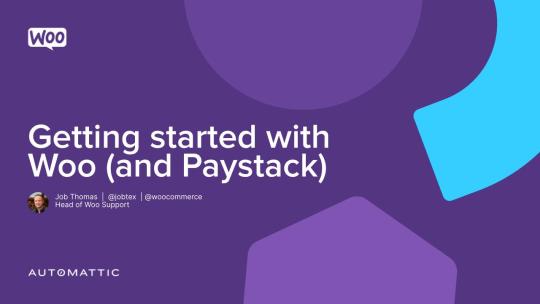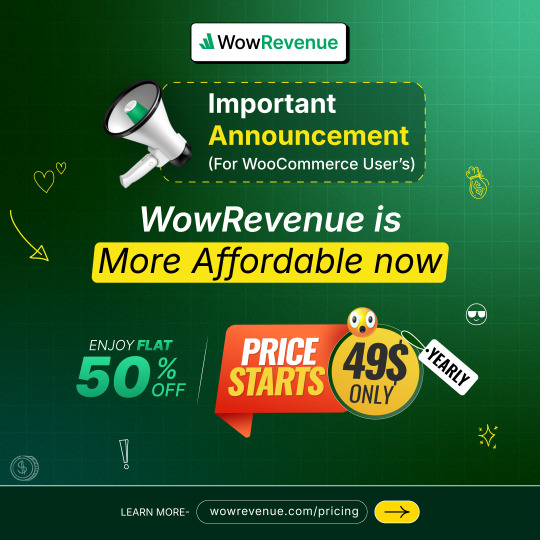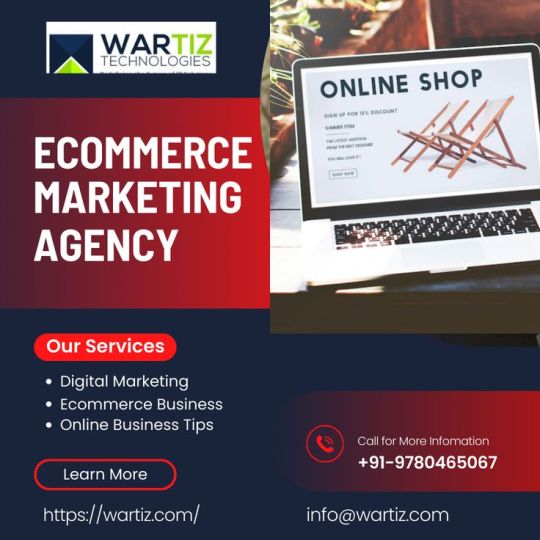#subscription woocommerce
Explore tagged Tumblr posts
Text
Install and use the Playback Rewards App!
#installation#playlist#playback#apple music#autos#celebrities#appleradio#software#mobile app#developer#application#rewards#subscription#market#woocommerce#animals#america#iphone#iphonography
0 notes
Text
Essential WooCommerce Subscription Plugins for 2024

The correct subscription plugin can significantly enhance customer experience, automate renewals, and speed up the administration of recurring payments for proprietors of WooCommerce businesses.
Selecting a suitable plugin can improve your company's revenue model whether you're establishing a fresh subscription service or enhancing an already-existing one. We'll analyse the top subscription plugins in this post, looking at their key characteristics, costs, and unique benefits. The purpose of this guidance is to enable you to make an educated decision that fits your unique business needs. Now let's get started!
1. Woo Subscriptions
Woo Subscriptions is perfect for creating reliable streams of income through model subscriptions because it enables businesses to set up automatic payments. Many membership methods for both apparent and virtual goods are made possible by this plugin.
Woo Subscriptions additionally allows companies to send renew alerts to consumers, ensuring that they are informed of their membership status, and links easily with over 25 payment processors.
2. Subscriptions for WooCommerce
You can build and manage subscription plans for your products and services with ease using the Subscriptions for WooCommerce plugin. It even works well for numerous various kinds of businesses. From online classes and online stores to OTT platforms and fitness centres. For your subscription-based things, you can also set up recurring payments for a specific amount of time. In addition, a free trial of this plugin's membership is available. As a result, your customers are aware of what their membership covers. It ensures smooth transaction processes through integrating with payment gateways like PayPal Standard with ease.
3. Prepaid for WooCommerce Subscriptions
The Prepaid for WooCommerce Subscriptions plugin enhances WooCommerce Subscriptions by allowing merchants to offer prepaid plans. This extension is perfect for businesses seeking to provide customers with the option to pay upfront for a subscription period, offering potential cost savings for both parties.
With this plugin, merchants can create multiple prepaid plans for each subscription product. For instance, alongside a standard monthly subscription, they can offer options like a 6-month or annual prepaid plan. This flexibility encourages higher customer commitment and upfront revenue generation.
5. SUMO Subscriptions
Users can create order subscriptions for non-subscription products as well as basic, variable, and group product subscriptions with the SUMO Subscription plugin. It offers customisation with regard to of subscription lengths and choices for renewal.
The flexible payment gateway support provided by this plugin is one of its best features. For manual subscription renewals, it interfaces with any payment gateway that is compliant with WooCommerce. SUMO Subscriptions has incorporated support for renowned gateways like Stripe and PayPal for automatic renewals, ensuring seamless transaction processing.
Wrapping Up!
A few of the best WooCommerce store-specific Custom Order Status plugins were looked at. The features of these plugins differ; certain ones provide bulk editing options and a limitless ability for developing customised status updates. Email notifications and reporting tools are typical features. It's essential that you select the plugin that maximises order management and best suits the particular needs of your WooCommerce website.
0 notes
Text
Getting started with Woo and Paystack
Today, I presented at the Paystack bootcamp in Cape Town and gave an introduction to Woo. Since today is also the day of the rugby world cup finals, and both South Africa and New Zealand sell their fan gear with Woo, I went a bit overboard with rugby references. The scoring Both the Springboks and the All Blacks use Woo, so they each score a point there. Woo used to have a head office in South…

View On WordPress
#All Blacks#AutomateWoo#Automattic#Conference#New Zealand#Paystack#Presentation#South Africa#Speaking#Springboks#Woo#Woo Subscriptions#WooAutomate#WooCommerce#Work
1 note
·
View note
Text
Insights on WooCommerce Subscriptions, and Memberships
In today’s competitive eCommerce landscape, offering subscriptions and memberships is a powerful way to create a loyal customer base and generate a steady stream of recurring revenue. WooCommerce, the most popular eCommerce platform for WordPress, offers two powerful plugins to help you build a successful subscription or membership-based business: WooCommerce Subscriptions and WooCommerce…

View On WordPress
0 notes
Text
Was going to write this as a reply to something but realized it needed its own post.
The tl;dr is that, from the looks of it, Automattic absolutely has every intention of turning Tumblr into a marketing media platform.
I work for a marketing company. I build websites.
Specifically, I build websites on Wordpress.org, which is operated by the Wordpress Foundation.
The Wordpress Foundation is the non-profit counterpart to the for-profit company Automattic.
Automattic, as we know, is the company that currently owns Tumblr.
Now, the thing about Wordpress.org (not to be confused with Wordpress.com) is that it's very, VERY popular amongst small businesses. Not only can you build a fully-customizable website with relative ease, you can also add an online shop using another Automattic product: Woocommerce.
Not too long ago, I noticed a new feature was added to Woocommerce: A button next to each Woocommerce product which allows you to Blaze them to Tumblr right from the comfort of your dashboard:

This is what I get when I click that little "Blaze" button...

As someone who understands these tools, I understand the potential implications of these features:
The Blaze feature is basically an up-and-coming ad campaign system that's directly integrated with Woocommerce websites, which I think is the first ad marketing system of its kind. You don't have to log into a social media account to advertise your products, use a second-party integration, or even pay another service to manage your social media ads. It's all baked right into your business's website.
THIS is their planned money-maker, folks, not the rainbow checkmarks or crab armies. And the reason why Automattic would do this kind of thing is simple: Businesses are wealthier than individuals. By implementing a B2B service, Automattic can make more money off of Tumblr than user subscriptions and shoelaces will ever provide.
It's all the same song and dance. Businesses can now shove more ads into your face in a new, convenient fashion. It'll be ads that don't look like ads disguised amongst ads that do look like ads, just like it is with Facebook, TikTok, Instagram, and literally every other marketing media service that calls itself a "social" media.
(Tumblr's new video feature? My guess is that it's there to prepare for video-format Blaze campaigns. Influencer-style videos are the only kind of ad format Gen-Z is receptive to, which is why you're suddenly seeing videos on every platform.)
All they really gotta do now is make Tumblr look appealing to the normies so they can draw in a userbase that isn't trying to escape the onslaught of commercialism that plagues other sites.
Tumblr is one of the last true social medias we have; a place where content is made purely for the sake of talking about it. But given the writing on the wall...I doubt it'll stay that way.
2K notes
·
View notes
Text

🟢🟡𝐁𝐢𝐠 𝐀𝐧𝐧𝐨𝐮𝐧𝐜𝐞𝐦𝐞𝐧𝐭 𝐟𝐨𝐫 "𝐖𝐨𝐨𝐂𝐨𝐦𝐦𝐞𝐫𝐜𝐞" 𝐔𝐬𝐞𝐫𝐬! 🟡🟢 Great news! 🎉 WowRevenue is now more affordable than ever! WowRevenue Appends a Yearly Subscriptions pricing.
✅ Enjoy FLAT 50% OFF! 💰 Pricing starts at just $49 / year only!
This is the perfect time to supercharge your WooCommerce store with AI-powered revenue optimization at a fraction of the cost. Get ready to boost sales and maximize profits effortlessly!
👉 Learn more & grab the deal now: https://www.wowrevenue.com/#pricing
#WowRevenue #WooCommerce #EcommerceGrowth #WPXPO #wordpress
4 notes
·
View notes
Text

Download premium WordPress themes, plugins, and CMS templates from wpfreefile.net with our affordable membership plan.
Get Started: Access 1000+ themes, plugins, and CMS templates for free with a membership plan. Buy any single theme, plugin, or template for just $1.5. Popular Themes: Divi Avada Enfold X Theme Flatsome Porto Soledad Newspaper Kalium Uncode Bridge Astra Pro Eduma Academy Pro Jannah Zeen Charity WP GiveWP Theme Real Homes Houzez BuddyBoss Kleo Popular Plugins: Rank Math PRO WP Rocket Sucuri Security iThemes Security Pro WooCommerce Subscriptions CartFlows PRO Elementor PRO Beaver Builder UpdraftPlus Premium Duplicator Pro MemberPress LearnDash Gravity Forms WPForms PRO OptinMonster HubSpot for WordPress Get access to all premium tools and templates today at unbeatable prices!
2 notes
·
View notes
Text
A Guide to Building Your Ecommerce Website Effectively

Building an effective eCommerce website is a crucial step in creating a successful online business. The right design and functionality not only attract customers but also provide them with an enjoyable shopping experience. Wartiz Technologies, with its expertise in web development, can help you build an eCommerce development services platform that stands out in the competitive online market.
1. Define Your Goals and Audience
Before diving into the design and development, it’s essential to clearly define your business goals and target audience. Are you looking to sell products directly, provide a marketplace for other vendors, or offer a subscription-based service? Understanding these aspects will help shape the overall structure and features of your site.
At Wartiz Technologies, we work with you to pinpoint your objectives and ensure that your website reflects your vision while catering to your customer base's needs.
2. Choose the Right Platform
Selecting the right eCommerce platform is critical for long-term success. Popular options like Shopify, WooCommerce, and Magento offer various features, but it’s important to choose the one that aligns with your business needs. If you require a highly customizable site, WooCommerce or Magento might be ideal. For a simpler, user-friendly experience, Shopify could be the best fit.
Wartiz Technologies can guide you through these choices, considering factors like scalability, ease of use, payment integration, and product catalog management.
3. Design for User Experience
A user-friendly design is at the heart of every successful eCommerce website. It’s essential to create a clean, intuitive layout that makes navigation easy for visitors. The goal is to ensure that customers can quickly find what they’re looking for without getting frustrated.
Focus on:
Simplified Navigation: Categories, filters, and search options should be easily accessible.
Mobile Optimization: A mobile-friendly design is crucial as most shopping is now done on smartphones.
Visual Appeal: Use high-quality images and a consistent color scheme to match your brand.
Wartiz Technologies excels in creating responsive and visually appealing designs that enhance the overall user experience, ensuring that visitors stay engaged and convert into customers.
4. Optimize for Speed and Performance
Website performance plays a vital role in both user experience and search engine rankings. Slow-loading pages can frustrate visitors and lead to abandoned carts. Optimizing images, enabling caching, and using content delivery networks (CDNs) are some strategies to ensure fast load times.
Wartiz Technologies employs best practices to optimize the performance of your eCommerce site, reducing bounce rates and improving your site's overall effectiveness.
5. Implement Secure Payment Gateways
Security is a significant concern for online shoppers. Ensuring that your site is equipped with secure payment gateways is crucial to protect sensitive customer data. Popular options like PayPal, Stripe, and Authorize.Net offer safe and seamless payment processing.
We prioritize security at Wartiz Technologies by integrating reliable payment solutions and enabling SSL encryption to safeguard transactions.
6. SEO and Content Strategy
Search engine optimization (SEO) is fundamental for driving organic traffic to your site. Your eCommerce website should be optimized for relevant keywords, product descriptions, and alt tags for images. A well-structured content strategy with blogs, guides, and customer reviews can also improve rankings.
Our team at Wartiz Technologies ensures that your eCommerce site is SEO-friendly, helping you reach a wider audience and increase visibility in search engine results.
7. Analytics and Continuous Improvement
Once your website is live, tracking its performance is essential to understanding customer behavior and identifying areas for improvement. Tools like Google Analytics provide insights into traffic, sales, and user interactions.
Wartiz Technologies offers ongoing support to help you analyze data, make informed decisions, and implement continuous improvements to maximize sales and customer satisfaction.
Conclusion
Building an eCommerce development services for website that delivers a seamless shopping experience and drives business growth requires careful planning, the right tools, and expert implementation. Wartiz Technologies is here to help you navigate the process, ensuring that your website is optimized for both user experience and business success.
Whether you’re starting from scratch or looking to improve your existing site, contact Wartiz Technologies to turn your eCommerce vision into a reality.
#Utility Billing Software#Wartiz Technologies#IT company Mohali#Ecommerce Development Services#Online Marketing Services#Digital Marketing Services
2 notes
·
View notes
Text

Starting an e-commerce business can be an exciting venture with immense potential. However, with the opportunities come challenges and uncertainties. Before diving into the world of online retail, it’s crucial to plan carefully and set a solid foundation. Here are some essential tips to consider before launching your e-commerce business:
1. Conduct Market Research
Understanding the market is fundamental to any successful business. Start by identifying your target audience and analyzing competitors. Research trends, customer preferences, and potential gaps in the market. Tools like Google Trends, social media analytics, and industry reports can provide valuable insights. This research will help you tailor your products or services to meet market demands and differentiate yourself from competitors.
2. Define Your Business Model
E-commerce offers various business models, such as B2C (Business to Consumer), B2B (Business to Business), C2C (Consumer to Consumer), and subscription-based models. Determine which model aligns with your goals and resources. Each model has its own set of challenges and requirements, so choose one that best fits your product or service and target market.
3. Create a Solid Business Plan
A comprehensive business plan serves as a roadmap for your e-commerce venture. Outline your business goals, strategies, target audience, marketing plan, financial projections, and operational plan. This document will not only guide your efforts but also help secure funding if needed. A clear plan can keep you focused and organized as you navigate the complexities of launching and running an e-commerce business.
4. Choose the Right E-Commerce Platform
Selecting the right e-commerce platform is crucial for the success of your online store. Popular platforms like Shopify, WooCommerce, Magento, and BigCommerce each offer unique features and capabilities. Consider factors such as ease of use, scalability, customization options, payment gateways, and integration with other tools. The platform should align with your business needs and provide a user-friendly experience for both you and your customers.
5. Develop a User-Friendly Website
Your website is the face of your e-commerce business. Ensure it’s designed to be user-friendly, visually appealing, and optimized for mobile devices. A clean, intuitive layout with easy navigation will enhance the shopping experience and reduce cart abandonment rates. Focus on high-quality images, detailed product descriptions, and a seamless checkout process. Additionally, implement search engine optimization (SEO) strategies to improve your site’s visibility in search engines.
6. Implement Secure Payment Processing
Security is a top priority in e-commerce. Customers need to trust that their payment information is safe. Choose a reputable payment gateway and ensure your website uses SSL certificates to encrypt data. Additionally, offer multiple payment options, including credit/debit cards, digital wallets, and other payment methods that are popular with your target audience.
7. Plan Your Logistics and Supply Chain
Efficient logistics and supply chain management are vital for e-commerce success. Develop a strategy for inventory management, warehousing, and shipping. Decide whether you’ll handle fulfillment in-house or partner with third-party logistics providers. Consider shipping options, delivery times, and costs. A smooth and reliable fulfillment process can significantly impact customer satisfaction and repeat business.
8. Craft a Marketing Strategy
Effective marketing is essential to drive traffic and sales to your e-commerce store. Develop a multi-channel marketing strategy that includes social media, email marketing, content marketing, and paid advertising. Create engaging content, run promotions, and leverage social media platforms to build brand awareness and attract customers. Monitor and analyze the performance of your marketing efforts to refine your strategies over time.
9. Focus on Customer Service
Exceptional customer service can set your e-commerce business apart from competitors. Provide multiple channels for customer support, such as live chat, email, and phone. Ensure timely responses to inquiries and resolve issues promptly. Building strong customer relationships and encouraging feedback can enhance customer loyalty and drive positive reviews.
10. Monitor and Adapt
The e-commerce landscape is constantly evolving. Regularly review your business performance, track key metrics, and gather customer feedback. Stay informed about industry trends and technological advancements. Be prepared to adapt your strategies and operations based on insights and changes in the market.
#ecommerce#marketing#business#digitalmarketing#ecommercebusiness#entrepreneur#onlineshopping#website#seo#webdesign#b#marketingdigital#onlinebusiness#branding#shopify#smallbusiness#socialmediamarketing#webdevelopment#online#amazon#shopping#onlinestore#onlineshop#design#ecommercewebsite#dropshipping
5 notes
·
View notes
Text

The Rise of Blockchain Payment Gateways: How They Are Changing Transactions
In recent years, cryptocurrency has gone from being a tech experiment to a practical tool for everyday use. One of the most exciting developments in this space is the rise of blockchain payment gateways. These platforms are giving businesses a way to accept payments in digital currencies like Bitcoin, Ethereum, and stablecoins. But what exactly makes blockchain payment gateways so special, and how can they benefit businesses? Let’s break it down.
What Is a Blockchain Payment Gateway?
Think of a blockchain payment gateway as the bridge between your business and customers who want to pay with cryptocurrency. Instead of relying on traditional banks or payment processors, these gateways use blockchain technology to send and receive payments. Transactions are quick, secure, and work without needing a middleman.
What Makes Them Different?
Direct Transactions: With blockchain, payments go directly from the customer to the business. No middle layers. No unnecessary waiting.
Global Payments Without Borders: Cryptocurrencies don’t care about borders or bank restrictions. A customer from New York can pay a shop in Tokyo just as easily as a local.
Security You Can Trust: Blockchain’s design makes it tamper-proof. Each transaction is recorded on a public ledger, ensuring transparency and preventing fraud.
Lower Fees: Businesses save money because blockchain payments skip the usual banking fees and currency conversion costs.
Privacy for Everyone: Customers don’t need to share personal banking details, which makes transactions safer for them and simpler for businesses.
Why Should Businesses Care?
Cryptocurrency adoption is growing fast. By accepting crypto payments, businesses can:
Reach New Customers: Crypto users are a growing audience. Adding this option could bring in customers who wouldn’t otherwise buy.
Prevent Payment Issues: Traditional systems often have chargebacks, where a customer disputes a payment and the money is reversed. Blockchain payments are final—once made, they can’t be undone.
Stay Ahead of the Curve: Digital currencies are becoming mainstream. Adopting blockchain payments now can put businesses ahead of competitors.
Where Can This Be Used?
E-commerce: Online stores can give customers an easy way to pay with crypto.
Subscriptions: Services like streaming platforms or SaaS companies can use blockchain to handle recurring payments.
Freelancers: Blockchain allows individuals to get paid faster and without high transfer fees, no matter where the client is.
How to Start Using Blockchain Payments
Getting started with a blockchain payment gateway is easier than you might think. Platforms like OxaPay provide tools that help businesses quickly integrate crypto payments. These gateways often include:
Simple setup tools, like plugins for popular platforms like WooCommerce.
Options to accept multiple cryptocurrencies, so customers can pay with their preferred coin.
Features like fixed payment addresses or automated notifications to keep things organized.
Why Blockchain Payments Are the Future
At its core, blockchain is about efficiency and fairness. It simplifies payments, lowers costs, and opens up opportunities for businesses to connect with a global audience. Whether you're running a small shop or a large company, embracing blockchain payment gateways can give you an edge in today’s competitive market.
The shift to digital currency is already happening. The only question is: will your business be part of it?
For more straightforward tips on using blockchain in your business, explore other posts on Blockchain Business Talk. We’re here to help you take the next step with confidence.
1 note
·
View note
Text
How to Increase Customer Retention with Subscription Plans in WooCommerce
Subscription plans have revolutionized the way businesses engage with their customers, offering recurring revenue and fostering long-term relationships. WooCommerce, a popular e-commerce platform, provides a robust framework for implementing subscription plans, enabling businesses to optimize customer retention and boost sales.
Why Subscription Plans?
Predictable Revenue: Consistent income stream from recurring payments.
Enhanced Customer Loyalty: Regular engagement and value delivery.
Reduced Customer Acquisition Costs: Lower marketing and sales expenses for repeat customers.
Data-Driven Insights: Valuable customer behavior data for informed business decisions.
Implementing Subscription Plans in WooCommerce: A Step-by-Step Guide
Choose a Subscription Plugin:
WooCommerce Subscriptions: A popular and reliable option, offering a range of features like flexible pricing, payment gateways, and customer management tools.
Other Options: Consider alternatives like MemberPress, Restrict Content Pro, or WP Simple Pay, which might offer additional features or integrations.
Configure Subscription Plans:
Define Plans: Create various subscription plans with different pricing models, durations, and benefits.
Set Up Payment Gateways: Integrate with payment gateways like PayPal, Stripe, or Authorize.Net to process recurring payments.
Customize Renewal Settings: Determine renewal behavior, grace periods, and automatic renewal options.
Optimize the Checkout Process:
Clear and Concise Information: Provide clear details about subscription terms, pricing, and benefits during checkout.
Easy-to-Understand Terms of Service: Present the terms of service in a user-friendly manner.
Secure Payment Processing: Ensure a secure and streamlined checkout experience.
Enhance Customer Experience:
Personalized Communication: Send timely renewal reminders, thank-you messages, and personalized offers.
Valuable Content and Offers: Provide exclusive content, discounts, or early access to new products for subscribers.
Excellent Customer Support: Offer prompt and efficient support to address any issues or concerns.
Leverage Data Analytics:
Track Key Metrics: Monitor subscription metrics like churn rate, revenue, and customer lifetime value.
Identify Trends: Analyze customer behavior to identify patterns and opportunities for improvement.
Make Data-Driven Decisions: Use insights to refine pricing strategies, marketing campaigns, and product offerings.
Tips for Increasing Customer Retention with Subscriptions:
Offer Flexible Plans: Provide a variety of subscription options to cater to different customer needs and preferences.
Transparent Pricing: Clearly communicate pricing and any additional fees to avoid surprises.
Easy Cancellation Process: Make it easy for customers to cancel their subscriptions, but offer incentives to stay.
Exceptional Customer Service: Build strong relationships with customers through prompt and helpful support.
Continuous Improvement: Regularly review and optimize your subscription plans based on customer feedback and data analysis.
By implementing these strategies, you can effectively increase customer retention, boost revenue, and build a loyal customer base for your WooCommerce store.
0 notes
Text
RedotPay: The Ultimate Payment Gateway for Fiat and Crypto Transactions.

Introduction
In today’s fast-paced digital economy, having a reliable payment gateway is crucial for businesses. RedotPay offers a versatile solution for managing both fiat and cryptocurrency transactions, making it an ideal choice for modern businesses. With features like zero tax transactions, free virtual cards, and global ATM access, RedotPay simplifies online payments while enhancing security and convenience. Plus, enjoy a $5 sign-up bonus and easy transferability. Discover why RedotPay is the preferred choice for businesses and how you can benefit from their referral program.
What is RedotPay?

RedotPay is an advanced payment gateway designed to handle both traditional fiat currencies and a range of cryptocurrencies. It provides a user-friendly platform that supports seamless online payments, ensuring high security and adaptability for businesses of all sizes. Key features include zero tax transactions, free virtual cards, and global ATM support.
Key Features of RedotPay
1. Support for Fiat and Cryptocurrency:
RedotPay supports transactions in both traditional currencies and digital cryptocurrencies. This feature allows businesses to cater to a diverse customer base and stay ahead in the evolving financial landscape.
2. Easy 0% Tax Transactions:
Enjoy effortless transactions with RedotPay’s zero tax processing. This feature eliminates additional transaction costs, simplifying financial management and maximizing your profits.
3. Free Virtual Card:
Upon signing up, you receive a free virtual card from RedotPay. This card can be used for secure online purchases, subscriptions, and other transactions, offering an extra layer of security.
4. Support for All Major E-Commerce Platforms:
RedotPay integrates seamlessly with all major e-commerce platforms such as Shopify, WooCommerce, and Magento. Whether you’re running an online store on Shopify or selling products on AliExpress, RedotPay ensures smooth and efficient payment processing.
5. Global ATM Access:
Access your funds from anywhere in the world with RedotPay’s support for local and international ATMs. There are no restrictions on where you can withdraw your money, offering unmatched convenience.
Why Choose RedotPay?
RedotPay is a powerful payment gateway that combines flexibility, security, and ease of use. By supporting both fiat and cryptocurrencies and offering features like free virtual cards and global ATM access, RedotPay addresses the needs of today’s global marketplace. With zero tax transactions and a $5 sign-up bonus, it’s a compelling choice for businesses looking to optimize their payment processing.
How to Benefit from RedotPay's Referral Program
RedotPay’s referral program provides an opportunity to earn commissions by introducing new clients to the platform. Here’s how you can start:
1. Sign Up:
Register for the RedotPay referral program on their website and receive a unique referral link.
2. Promote RedotPay:
Share your referral link via your website, blog, or social media. Highlight RedotPay’s key features and benefits, such as its integration with platforms like Shopify and AliExpress, to attract potential clients.
3. Earn Commissions:
For every new client who signs up using your referral link, you’ll earn a commission. The more referrals you generate, the greater your earnings.
4.Track Your Progress:
Use RedotPay’s dashboard to monitor your referrals and commissions. This allows you to stay updated on your performance and refine your promotional strategies.
Conclusion
RedotPay offers a versatile and secure payment gateway solution that accommodates both fiat and cryptocurrency transactions. With features such as zero tax transactions, a free virtual card, global ATM access, and seamless integration with major e-commerce platforms like Shopify and AliExpress, RedotPay provides exceptional value. Don’t miss the opportunity to earn a $5 sign-up bonus and commissions through the referral program. Sign up for RedotPay today and experience top-tier payment processing.
Call to Action
Ready to enhance your payment processing? Join RedotPay now to enjoy a $5 sign-up bonus and start earning through our referral program. Get started today and revolutionize your payment experience!
#crypto#bitcoin#virtual card buy with cryptocurrency#signupbonus#free earning#cryptocurrency#ecommerce#shopify#aliexpress#affiliate program
2 notes
·
View notes
Text
How to Turn Your Online Business Dreams into Reality


Introduction: The Digital Frontier of Entrepreneurship Selecting a Niche and Business Model: The Foundation of Success Building Your Online Platform and Brand: Your Digital Headquarters Creating High-Demand Products and Services: Delivering Value to Your Audience Implementing Effective Marketing Strategies: Attracting Targeted Traffic Diversifying Revenue Streams for Maximum Profits: Building Financial Stability Optimizing for Maximum Profitability Long-Term: Building a Sustainable Business Conclusion: Turning Dreams into Reality True successful story
Introduction: The Digital Frontier of Entrepreneurship
In today's digital age, the rise of the internet and technology has revolutionized the way we do business. It has opened a world of opportunities for entrepreneurs to start and run their own businesses online. Online businesses offer flexibility, scalability, and the potential for global reach. This comprehensive guide will provide you with a step-by-step framework for building a profitable online business from the ground up. Whether you want to start a side business or build a full-time online empire, follow this ultimate guide to turn your idea into a thriving, sustainable online business. With focus, grit, and commitment to continuous improvement, you can build the profitable online business of your dreams.
Selecting a Niche and Business Model: The Foundation of Success
The foundation of every successful online business is choosing a profitable, in-demand niche and a business model tailored to your goals. Select a niche you're passionate about; this will make creating content a breeze. Conduct thorough keyword research to assess search volume and demand. Join relevant online communities to connect with your audience and understand their needs. Evaluate direct competitors in the niche and aim for less saturated niches or unique angles. Consider affiliate marketing potential, as some niches offer higher commissions. Assess opportunities to create multiple products and monetize in diverse ways. Examples of popular online business niches include health, fitness, personal finance, pet care, tech, travel, content marketing, home design, spirituality, language learning, and more. Choose a business model that complements your niche and provides multiple income stream opportunities. Many successful online businesses incorporate 3-4 monetization models. Some of the best online business models to consider include: 1. Blogging: Make money with display ads, affiliates, and branded products. 2. Online Courses: Sell your knowledge and expertise as courses. 3. Dropshipping: Curate and sell products without inventory. 4. Affiliate Marketing: Earn commissions promoting other companies' products. 5. Information Products: Sell online books, templates, checklists, and more. 6. Virtual Services: Provide consulting, freelancing, coaching, or other services. 7. Subscription Membership Site: Offer exclusive content or tools for a monthly fee. 8. E-commerce Store: Sell physical products, merchandising, and more. Your choice should complement your niche and offer multiple income streams. Many successful online businesses incorporate 3-4 monetization models.
Building Your Online Platform and Brand: Your Digital Headquarters
Your website or blog will serve as the headquarters for your online business. Invest time upfront in creating an optimized, professional-looking platform. Purchase a domain name that matches your brand, ideally a .com if available. Select reliable web hosting with optimal speed and uptime. Install WordPress or ecommerce platforms like Shopify or WooCommerce. Design an on-brand, mobile-responsive theme that conveys your style. Include essential pages like Home, About, Contact, Services, Blog, and Shop. Set up email marketing and analytics to capture leads and track traffic data. Create visually branded assets such as logos, color palettes, fonts, and graphics. Ensure a cohesive user experience across all touchpoints. If you lack web development skills, consider hiring a freelance designer to bring your vision to life. Continually optimize your website for higher traffic, leads, and sales over time. This includes technical enhancements, user experience improvements, and page speed optimizations.
Creating High-Demand Products and Services: Delivering Value to Your Audience
The key to running a profitable online business is consistently creating products and services that deliver extreme value to your audience. Popular digital products you can create include online courses, eBooks, guides, checklists, software, premium memberships, virtual events, video tutorials, templates, and more. When brainstorming products, look for opportunities to simplify lives, save time, educate, entertain, or improve outcomes for your target customers. Leverage your expertise and tap into the skills of others to create premium offerings. High-value services like consulting, freelancing, coaching, and more can also be extremely lucrative. Promote your services through your website and social platforms. Structure your offerings to passively earn income over time, such as online courses that continually generate sales vs. 1-on-1 services that require ongoing effort. Deliver an excellent user experience across your products and relentlessly optimize based on feedback to foster raving fans who refer others.

Implementing Effective Marketing Strategies: Attracting Targeted Traffic
Once your online platform and offerings are ready, it's time to start attracting targeted traffic using proven marketing tactics. A diverse marketing mix is key. Some of the top strategies include: 1. Content Marketing: Create engaging blog posts, videos, and visual content. 2. SEO: Optimize your website for search engines through on-page optimization and link-building. 3. PPC Ads: Utilize platforms like Google, Facebook, Instagram, and YouTube for pay-per-click advertising. 4. Email Marketing: Build your email list with lead magnets, newsletters, and automation. 5. Social Media Marketing: Employ organic and paid tactics to engage your audience. 6. Affiliate Marketing: Recruit others to promote your products and earn commissions. 7. Influencer Partnerships: Collaborate with relevant influencers in your niche. 8. Live Events: Host local meetups or virtual events to connect with your audience. 9. Podcast Guest Appearances: Grow your authority and reach new audiences. 10. Retargeting Ads: Remarket to previous site visitors across the web. Start by focusing on 1-3 core channels, then expand your efforts over time. Pay-per-click and social ads can help quickly scale an audience, while SEO and content creation tend to be most cost-effective in the long-term. Leverage tools like Google Analytics, Facebook Business Suite, and landing page builders to optimize results across all campaigns. Don't hesitate to enlist help from digital marketing agencies and specialists.
Diversifying Revenue Streams for Maximum Profits: Building Financial Stability
Generating multiple streams of revenue is key for building a highly profitable online business. Diversification reduces risk and provides stability as each income channel goes through ups and downs. Here are some of the most lucrative online business revenue models: 1. Product/Service Sales: Your core monetization stream. Ensure competitive yet profitable pricing. 2. Advertising: Display ads, sponsorships, native advertising, etc. Set up Google Ad Manager. 3. Affiliate Marketing: Promote other company's products for commissions. Join affiliate networks. 4. Memberships/Subscriptions: Offer exclusive benefits, content, or tools for a monthly fee. 5. Events: Sell tickets for online or in-person events and training programs. 6. Dropshipping: Curate and sell products without holding inventory. 7. Physical Merchandise: Sell branded products with print-on-demand services. 8. Consulting/Freelancing: Sell your skills and expertise through 1-on-1 services. 9. Tip Jars/Donations: Allow fans to tip or donate to show support. Aim to generate income from both active efforts like service packages and passive streams like online courses that earn as you sleep. Automate processes wherever possible to scale income without increasing workload proportionally. Reinvest profits back into growing your business and diversifying income channels to create an unstoppable snowball effect over time.



Optimizing for Maximum Profitability Long-Term: Building a Sustainable Business
Launching a profitable online business is an important first step. However, creating systems and processes that enable high profitability long-term is vital for sustaining growth. Here are some best practices for optimizing operations and profitability: - Obsessively track KPIs and metrics for all marketing channels and funnels. Analyze data to optimize underperforming areas. - Create excellent customer support systems. Provide prompt, personalized support to increase satisfaction and referrals. - Automate repetitive tasks wherever possible with tools like Zapier. Automate lead collection, customer onboarding, analytics, inventory management, etc. - Systematize your product creation process to quickly test and validate new product ideas, then scale those that resonate. - Document your systems and processes so future hires can replicate them. This includes SOPs for customer service, product fulfillment, etc. - Build a skilled team over time by hiring virtual assistants, freelancers, agencies, and eventually full-time employees. Focus on higher-level strategy. - Maintain work-life balance as a long-term entrepreneur. Make time for adequate rest, leisure, and self-care to avoid burnout. By staying agile, embracing innovation, and relentlessly providing value to your audience, you can build an online business that delivers meaningful income for decades to come.



Conclusion: Turning Dreams into Reality
Starting and running a profitable online business takes consistent effort and persistence. However, by zeroing in on a niche, selecting the right model, crafting high-value offerings, implementing diverse marketing strategies, diversifying your revenue streams, and optimizing for maximum efficiency, you can build an online business that provides freedom and fulfillment for years to come. Remember to stay obsessively focused on understanding and serving your target audience. Combine your passion with grit, resilience, and creativity. With the right mindset and business foundations in place, you have immense potential to build a thriving online business that stands out and makes a lasting impact. The time to stop dreaming and start taking action is now. Follow this comprehensive guide to turn your online business idea into reality, step-by-step. You can build an online empire that allows you to live life on your terms. The possibilities are truly endless if you commit to continuous learning and improvement. Let this guide spark the fire within and set you on the path to online business success. Start pursuing your online entrepreneur dream today.


True successful story
To illustrate the principles and strategies discussed in this comprehensive guide, let's delve into the inspiring true story of Pat Flynn and his online business, Smart Passive Income. Smart Passive Income - About Pat Flynn Background: Pat Flynn was once an aspiring architect who unexpectedly found himself laid off during the economic downturn in 2008. Faced with uncertainty, he turned to the online world to seek alternative income sources. His journey began with a blog, which he aptly named Smart Passive Income (SPI). Selecting a Niche and Business Model: Pat recognized that there was a significant demand for information about creating online businesses and generating passive income. He was passionate about sharing his experiences, both successes and failures, and helping others navigate the world of online entrepreneurship. Pat's chosen niche was personal finance, but his business model extended beyond blogging. Building Your Online Platform and Brand: Pat invested in creating a professional-looking platform for SPI. He purchased a domain name, set up reliable web hosting, and designed an appealing website. His commitment to providing value was evident through the content he produced on his blog, podcast, and YouTube channel. His brand, Smart Passive Income, became synonymous with transparency, authenticity, and actionable advice. Creating High-Demand Products and Services: One of Pat's significant successes came from his creation of online courses and informational products. He developed courses on topics like email marketing, affiliate marketing, and podcasting, leveraging his expertise and audience trust. These products delivered immense value to his audience and contributed significantly to his income. Implementing Effective Marketing Strategies: Pat's marketing strategy was built on content marketing, podcasting, and email marketing. He consistently produced high-quality blog posts and podcasts, which not only attracted a dedicated audience but also positioned him as an industry expert. His email list grew as he offered valuable lead magnets and nurtured his subscribers. Diversifying Revenue Streams for Maximum Profits: Pat's income streams diversified over time. In addition to course sales, he earned from affiliate marketing, book sales, and speaking engagements. He also ventured into software development, creating tools like the Smart Podcast Player. This diversification provided stability and mitigated risk. Optimizing for Maximum Profitability Long-Term: Pat was relentless in optimizing his operations. He regularly analyzed data and user feedback to improve his products and content. His team expanded as the business grew, allowing him to focus on strategic decision-making. Pat prioritized work-life balance, emphasizing family and well-being. Conclusion: Pat Flynn's journey from unexpected job loss to the creation of a successful online business, Smart Passive Income, serves as an inspiring real-life example of the principles discussed in this guide. His dedication to providing value, commitment to continuous improvement, and willingness to diversify income streams are key takeaways for anyone aspiring to build a thriving online business. Pat's story reminds us that with the right mindset and a clear vision, online entrepreneurship can lead to a fulfilling and prosperous career.


Read the full article
#business-model#guide#marketing#niche#online-business#products#profitability#revenue#services#Success
5 notes
·
View notes
Text
Get a fully verified Klarna, Stripe, 2Checkout, or Shopify payment gateway from us.

Do you need a custom payment gateway and a simple checkout system for your website users so that they may become paying customers?
I am an expert in the integration of payment gateways. I can provide you any payment gateway, such as PayPal, Stripe, Klarna, Google Pay, Apple Pay, Crypto, Worldpay, Payfast, and many others, with your website. You do not have to provide any documents; I will provide all necessary documents and verify your payment gateway.
Please let me know your specifications. I will complete your assignment in no more than 72 hours.
Payment of a single fee
Payment of recurring charges
Subscriptions from customers
Make a plan.
Integration of Stripe into WooCommerce
I will provide the following payment method with Stripe:
Credit/Debit Cards
Alipay
Google pay
Giropay
Sofort
Apple Pay
Klarna
And many more.
Check out here.
https://www.fiverr.com/s/6Rqlxb
#paypay使えます#paypal#Stripe#stripe integration#PayPal account#PayPal integration#Shopify Payment gateway#PayPal payment gateway#shopify#wordpress#Shopify Payment#WordPress Payment
3 notes
·
View notes
Text
How to Make Passive Income Online
In today’s digital age, making passive income online has become more accessible than ever. Passive income allows you to earn money with minimal ongoing effort after the initial setup. Whether you want to supplement your existing income or build a full-time online business, there are various ways to generate passive income. Here are some of the best methods:
1. Start a Blog
Blogging can be a great way to earn passive income by monetizing content through ads, affiliate marketing, and digital product sales.
How It Works: Write high-quality content targeting a specific niche.
Income Sources: Display ads, sponsored posts, and affiliate marketing.
Tools Needed: A domain, hosting service (like Bluehost or SiteGround), and a content management system like WordPress.
Tip: Focus on SEO to attract organic traffic.
2. Create and Sell Online Courses
If you have expertise in a particular field, you can create and sell online courses on platforms like Udemy, Teachable, or Skillshare.
How It Works: Develop structured course content and upload it to an online learning platform.
Income Sources: One-time purchases or subscription-based access.
Tools Needed: Video recording equipment, course planning software, and an LMS (Learning Management System).
Tip: Offer free mini-courses to attract students and upsell premium content.
3. Affiliate Marketing
Affiliate marketing involves promoting other companies’ products and earning a commission for each sale generated through your referral link.
How It Works: Share affiliate links in blog posts, social media, or YouTube videos.
Income Sources: Commissions from product sales.
Tools Needed: An affiliate program like Amazon Associates, ShareASale, or CJ Affiliate.
Tip: Promote products you genuinely use and trust.
4. Sell Digital Products
Selling digital products is a great way to make passive income because they require no inventory or shipping.
How It Works: Create eBooks, templates, printables, stock photos, or software and sell them online.
Income Sources: Sales through platforms like Gumroad, Etsy, or Shopify.
Tools Needed: Design software like Canva, Adobe Photoshop, or a digital marketplace.
Tip: Automate delivery using online platforms.
5. Invest in Dividend Stocks
Dividend stocks allow you to earn passive income through regular payouts from companies in which you invest.
How It Works: Buy shares in dividend-paying stocks and collect payouts.
Income Sources: Stock dividends.
Tools Needed: A brokerage account like Robinhood, Fidelity, or Vanguard.
Tip: Reinvest dividends to compound your earnings over time.
6. Create a YouTube Channel
YouTube offers multiple monetization options, making it a lucrative passive income source.
How It Works: Upload engaging videos on a topic of interest.
Income Sources: YouTube AdSense, sponsorships, and affiliate marketing.
Tools Needed: A good camera, microphone, and video editing software.
Tip: Be consistent and create valuable content to grow your audience.
7. Dropshipping Business.
How It Works: Set up an online store and partner with a supplier.
Income Sources: Profit margins from product sales.
Tools Needed: Shopify, WooCommerce, or BigCommerce.
Tip: Focus on trending products with high demand.
8. Sell Stock Photos & Videos
If you’re a photographer or videographer, selling stock images and videos can be a great passive income stream.
How It Works: Upload high-quality images and videos to stock websites.
Income Sources: Royalties from stock websites like Shutterstock, Adobe Stock, or Getty Images.
Tools Needed: A professional camera and photo editing software.
Tip: Research in-demand content to maximize earnings.
9. Write and Sell an Ebook
If you have knowledge or experience in a subject, writing an eBook can generate passive income.
How It Works: Publish an eBook and sell it on platforms like Amazon Kindle or Gumroad.
Income Sources: Royalties from book sales.
Tools Needed: Writing software like Scrivener or Microsoft Word.
Tip: Promote your book through social media and blogging.
10. Rent Out Property on Air.
If you own property, you can rent it out on Airbnb for short-term stays.
How It Works: List your property and manage bookings.
Income Sources: Rental income from guests.
Tools Needed: An Airbnb account and a well-furnished property.
Tip: Optimize your listing with high-quality photos and great customer service.
1 note
·
View note
Text
🟢𝐓𝐡𝐨𝐮𝐬𝐚𝐧𝐝𝐬 𝐨𝐟 𝐒𝐦𝐚𝐫𝐭 𝐒𝐭𝐨𝐫𝐞 𝐎𝐰𝐧𝐞𝐫𝐬 𝐔𝐬𝐞 𝐖𝐨𝐰𝐑𝐞𝐯𝐞𝐧𝐮𝐞 – 𝐃𝐨 𝐘𝐨𝐮❓
𝐖𝐨𝐰𝐑𝐞𝐯𝐞𝐧𝐮𝐞 Biggest Deal Yet. 𝐅𝐥𝐚𝐭 𝟓𝟎% 𝐎𝐟𝐟𝐞𝐫- in Yearly Subscriptions.
WooCommerce businesses worldwide trust WowRevenue to boost their sales and grow revenue effortlessly.
✅ AI-driven insights for smarter decisions ✅ Automated product recommendations that increase conversions ✅ Optimized pricing strategies for higher profits 💡 The question is—are you leveraging WowRevenue yet?
👉 scale your store today: https://www.wowrevenue.com
2 notes
·
View notes